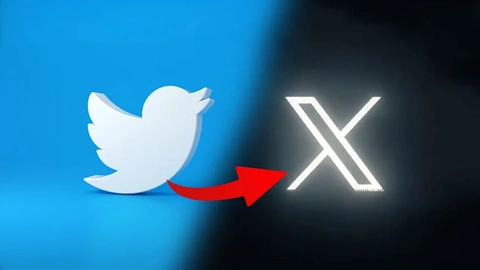Why twitter change to x ?
Twitter, now rebranded as “X,” is a social media platform that was originally founded in 2006 by Jack Dorsey, Biz Stone, Evan Williams, and Noah Glass. It quickly became one of the most influential social networking sites globally, known for its unique format of short, real-time posts called “tweets.”
Twitter’s primary feature is the ability to post short messages, known as tweets, which were originally limited to 140 characters but later expanded to 280 characters. Users can share text, images, videos, links, and more.
Tweets can be liked, retweeted (shared), or replied to by other users, creating a dynamic and interactive communication environment.
Twitter operates on a follower model, where users can follow others to see their tweets in their timeline. Unlike some social networks, following on Twitter doesn’t have to be reciprocal.
Why twitter change to x ?
Users can follow accounts that interest them, including celebrities, politicians, news outlets, and brands, making Twitter a significant platform for real-time news and public discourse.
Twitter popularized the concept of trending topics, which are hashtags or keywords that gain significant attention in a short period. These trends often reflect global or local events, cultural moments, or viral content.
Hashtags (words or phrases preceded by a “#” symbol) are used on Twitter to categorize tweets and make them discoverable by others interested in the same topic. They play a key role in organizing and amplifying content around specific events, movements, or discussions.
Twitter includes a Direct Messaging (DM) feature, allowing users to send private messages to each other. This feature supports one-on-one conversations as well as group chats.
Many businesses use Twitter for marketing, customer service, and brand engagement. The platform offers tools like Twitter Ads, which allow businesses to promote tweets and reach broader audiences.
Twitter also provides analytics tools for tracking the performance of tweets and campaigns, making it a valuable tool for digital marketing strategies.
Twitter introduced verification badges, symbolized by a blue checkmark, to signify the authenticity of certain accounts, particularly those of public figures, celebrities, and brands.
The verification system underwent changes, especially after Elon Musk’s acquisition, where the criteria for verification and the introduction of paid verification via Twitter Blue became significant topics of discussion.
Twitter has had a profound impact on global culture and communication. It’s been a platform for significant movements like the Arab Spring, #MeToo, and Black Lives Matter. The platform has also been a crucial space for breaking news and real-time event coverage.
Why twitter change to x ?
Over the years, Twitter has faced challenges related to content moderation, harassment, misinformation, and the spread of fake news. The platform has made various efforts to combat these issues, including introducing content warnings, labeling misinformation, and suspending accounts that violate its policies.
Here’s a more detailed breakdown of Why twitter change to x :
Elon Musk acquired Twitter in October 2022 for approximately $44 billion.
From the outset, Musk expressed interest in transforming Twitter into something much broader than a social media platform.
Musk’s vision for Twitter was inspired by his concept of an “everything app,” which he initially explored with his company X.com, a precursor to PayPal. The idea behind an “everything app” is a platform that integrates various services—social networking, payments, e-commerce, and more—into one seamless experience.
In July 2023, Twitter underwent a significant rebrand, changing its name to “X.” The iconic blue bird logo was replaced by a minimalist “X” logo.
This rebranding is more than just a name change; it represents Musk’s ambition to transform the platform into something fundamentally different. The new branding reflects Musk’s broader aspirations for the platform, which he has described as the future of “unlimited interactivity” and “financial services.”
The rebranding aligns with Musk’s strategy to evolve the platform into a more versatile application, somewhat akin to China’s WeChat. WeChat allows users to do everything from messaging to making payments, booking rides, and even accessing government services. Musk envisions “X” as a similar platform in the Western world, with the potential to incorporate various technologies, including AI, cryptocurrency payments, and more.
Since the rebranding, Twitter/X has seen various changes in its features. Some of these include the introduction of new subscription tiers, enhanced video capabilities, and plans to integrate payment systems.
Musk has also indicated plans to make the platform more creator-friendly, possibly incorporating tools for content creators to monetize their work more effectively.
The rebranding has been met with mixed reactions. Some users and industry experts are excited about the potential of “X,” while others are nostalgic for the old Twitter brand and skeptical about the platform’s future.
There has been concern over how these changes might affect the user experience, particularly for those who valued Twitter’s role as a straightforward social media and news platform.

